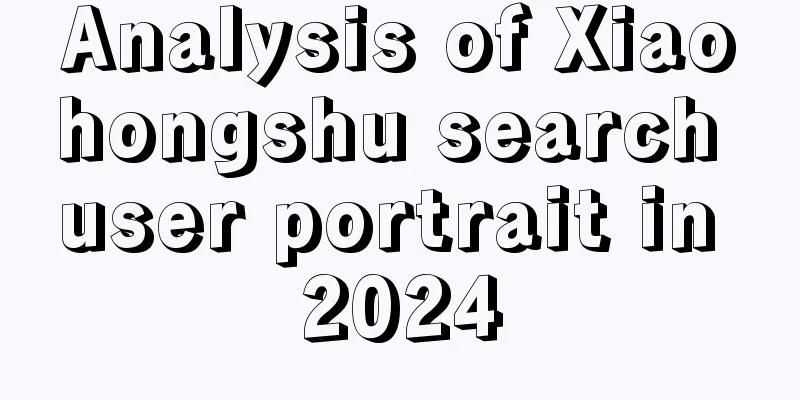Xiaohongshu, the most suitable platform for Chinese lululemon from 0 to 1

I said three years ago that it would be difficult for China to produce another P&G, but there would be countless Lululemons. Over the years, I have really seen the shadow of lululemon in many brands, especially many new brands that have only started in the past two years. They have found their own brand coordinates and strategic logic very steadily and accurately from the beginning. For example, Tagi, Yangzhidao, Farbrique, etc., their business volume may not be particularly large, but they have accumulated a group of loyal users, stable cash flow, and made their brands "small and beautiful". These brands have several common characteristics:
Of course, their ability to quickly achieve PMF (product market fit) also has a lot to do with the platform they choose. My own experience is that many of these small and beautiful super crowd brands are emerging on Xiaohongshu. I don’t know if you have this feeling, but I often start to have three consecutive question marks while browsing Xiaohongshu—— Why does this thing look so good? Why haven’t I heard of this brand? Why does this brand, which I’ve never heard of, have more fans than me? In order to answer my inner confusion, I interviewed the Xiaohongshu platform and two brands that had very different strategies but both achieved results on Xiaohongshu: One is the oriental intangible cultural heritage fragrance brand "Chengbai", which currently mainly produces various indoor fragrance products. It started from the B-end and began to enter the C-end market in 2023. Currently, both businesses are growing rapidly; Another one is Pelagia Diving Photography Club, which does underwater photography. What’s special is that this brand only operates on Xiaohongshu, and it attracted traffic right from the start and started making money on the third day of operation. They actually represent two typical brands: consumer brands and lead brands. After talking with them, I became more convinced of my idea: the most suitable platform for Chinese brands like Lululemon to go from 0 to 1 is Xiaohongshu. In this article, I will explain why I think so, and what homework you can copy if you really want to do From 0 to 1 on Xiaohongshu. 1. Understanding super people is the prerequisite for building super brandsI once summarized lululemon's success in three points: super crowd, super product, and DTC model. Looking back, where do these three key elements intersect? Isn't it on Xiaohongshu? First, let’s look at the super crowd. Lululemon is tapping into the “super girl” bonus in the United States: 24-35 years old, with an annual income of more than $80,000, well-educated, and fond of sports. This group of people represents the future of consumption. On the other hand, Xiaohongshu already has a lot of potential "super crowds" . According to Xiaohongshu's latest platform population portrait, among the 300 million monthly active users, the ratio of men to women is 3:7, 50% are born after 1995, 35% are born after 2000, and 50% are users in first- and second-tier cities. They are not very sensitive to prices, but are more concerned about the uniqueness of product value. Isn't this exactly the high-net-worth population that brands want the most? On the other hand, the most valuable group of people is actually the trend group. Xiaohongshu is a word-of-mouth community, which gives it the ability to "create trends". In the past few years, there have been countless trends on Xiaohongshu. For example, I play Frisbee, pickleball, Lu Chong and meditation, which are all trend lifestyles that have been planted on Xiaohongshu. And these lifestyles are to major brands, just like yoga is to lululemon, there is unlimited potential behind them. Secondly, let’s look at super products. Xiaohongshu has a complete set of capabilities that make the product more systematic, from opportunity insight to product strategy to marketing promotion. Compared with shelf e-commerce, the characteristics of Xiaohongshu content e-commerce determine that the user insights and data it brings are more forward-looking. It has an in-depth understanding of consumers before product development, which is equivalent to directly moving the starting line forward. More importantly, unlike other content e-commerce platforms, Xiaohongshu understands people from the perspective of lifestyle, can see specific people and real needs, and can even see some blind spots in needs, making the direction of product development and iteration clearer. Once a product is developed, the subsequent promotion process can be seamlessly connected with the core ideas of the early stage to maximize the product advantages. Finally, there is the DTC model. The DTC strategy in China generally has two levels. The first level is DTC as a channel, which is different from the wholesale model. It removes the middleman, sells the product directly to the customer, and obtains the user data. There is no doubt that Xiaohongshu provides such a venue for brands. The real DTC is not just a channel strategy. Its core is not social media and online traffic, but the use of data to improve user experience in a more refined way. This brings us back to the two points mentioned above, which is also where Xiaohongshu has more advantages - people-oriented. Super crowd, super product, and DTC model, these three interlocking points can perfectly solve the pain points of a brand starting from 0 to 1: no money, and the problem of inaccurate crowd and product selection caused by lack of money. It is precisely because Xiaohongshu understands people from the perspective of lifestyle that countless segmented groups and scenarios have been created. Take the 20 major lifestyle groups released by Xiaohongshu as an example. The "home life" group is further divided into four categories from the perspective of demand: "nomadic youth", "nest-building youth", "all-round life expert" and "home curator". Each group category contains more dimensional scenarios, such as practical, healing, romantic and so on. In China, there is actually a big market behind every segmented scenario. As long as you are willing to get involved, you can find business. 2. Key Point 1: "People-oriented" to quickly run PMFNow that brands have come to Xiaohongshu, what should they do specifically? Marc Andreessen, the Silicon Valley tycoon who invested in Facebook and Twitter, once said: The only important thing for a startup is to find PMF, that is, to understand market demand and provide product solutions. Many products cannot find PMF because they cannot see the real needs. Either the founder’s ego is too big and he fantasizes about the needs, or he only thinks about how to pile up performance parameters and make the product "beautiful" instead of "accurate." However, on Xiaohongshu, the underlying logic of "people-oriented" ensures the authenticity of these needs. Chengbai and Pelagia both successfully started on Xiaohongshu through this path. The reason why the diving photography brand Pelagia started making money on the third day on Xiaohongshu is because it found its first wave of users very accurately. Pelagia was officially founded after the epidemic. When finalizing the core group, the brand did three levels of thinking: where to go? Why to go? What activities to play? In response to these three questions, the brand positioned the core group as "lazy people who come to Sanya for vacation and value spiritual needs." The logic behind this is that the domestic tourism market had just recovered at that time, and those who could come to Sanya were basically high-spending people, which was the first level of screening; tourists are divided into two categories: experience and display. The latter, to put it bluntly, come out to play just to post photos on WeChat Moments, which is the second level of screening; and Sanya has many water projects, and surfboards, airboats, and seaplanes require a certain level of physical strength. Only truly "lazy" people will choose underwater photography. In addition to being able to find the earliest and most core users on Xiaohongshu, brands can also use Xiaohongshu as an external consumer research team to find product inspiration in bloggers' notes and comments, or improve products through user feedback. For example, Pelagia is planning to expand its business of wearing Cosplay clothes to go into the water recently because it saw a blogger wearing EVA Rei Ayanami's clothes to go into the water, and the note data performed very well. Of course, due to the different nature of products, not all brands will adjust the feedback to the supply chain in a timely manner. However, even if the product has been launched, brands can still co-create selling points through cooperating bloggers. Bloggers are closer to the market, have wild ideas, and sometimes can even discover the hidden needs of users. Chengbai gave me an example. They recently launched a new Xiaomei gourd aromatherapy, and the set of accessories includes a fur ball diffuser. During the internal testing phase of the product in cooperation with bloggers, one of the feedbacks received was that "the furry diffuser is very good to rub". This is a selling point that Chengbai never thought of, but it is reasonable on Xiaohongshu. After all, a Xiaohongshu note about raising a mango pit into a "mango dog" received more than 100,000 likes. The psychological mechanism behind this is similar to "good rua". The matching of crowd, demand and product is the process of enterprises finding PMF. Before finding it, the most important thing is to verify more and spend less money to save lives. This seems contradictory, but Xiaohongshu's crowd reverse funnel model provides a small-step and fast-running delivery method with low trial and error costs. It allows brands to get user feedback and delivery results through the most accurate people before adding budgets. That’s why I said that Xiaohongshu is particularly suitable for small and medium-sized businesses with limited budgets. 3. Key Point 2: Content Marketing: Don’t Follow Local CustomsAfter chatting with Chengbai and Pelagia Diving Photography Club, I found that after the tide receded in the past two years, the entrepreneurs who stayed behind have accumulated a lot of content experience. The reason why these two brands were able to break through quickly through Xiaohongshu is that they did a good job, as Jiang Nanchun said, "When in Rome, do not follow the customs; when following the crowd, do not follow the crowd." First of all, we need to "get into the local area", which means that we should not beat around the bush and directly use the language that best suits the temperament of Xiaohongshu to create content. On Xiaohongshu, truth is the first language and beauty is the second language. Since its inception, Xiaohongshu has required that community users must be real consumers and that the information shared must be real shopping experiences. This has created a "word-of-mouth" community atmosphere for Xiaohongshu. Here, it doesn't matter who you are, but what matters is that you can share some real and useful content. At the same time, users have a clear positioning for Xiaohongshu, which is to mark a beautiful life. Under such a two-way screening, "beautiful" content is naturally more popular. Based on truth and beauty, Pelagia has summarized three styles of copywriting and materials that can quickly create an account:
"Not following the crowd" means you cannot blindly follow others. You need to constantly adjust your content strategy and KFS approach based on the situation of your own brand and changes in the platform. Chengbai cleverly used content strategy to change its track. Competition in the fragrance market is fierce, and product content strategies are relatively simple. Many brands focus on the visualization of scents, life aesthetics, self-use atmosphere, etc., but Chengbai focuses on "gifts" in terms of content, and immediately found scene opportunities such as "gifts to bridesmaids at weddings", "gifts to moms on Mother's Day", and "gifts to partners on Valentine's Day". It also turned its competing products into cross-category products such as flowers, high-end skin care products, etc., which immediately opened up the idea of content marketing. In the six months since it invested in Xiaohongshu at the end of 2023, Chengbai's content strategy has changed drastically: at the end of last year, it reinvested in bloggers, and its ROI once reached 3, helping the brand quickly break through the white mark. Following the changes in the platform's content ecology, Chengbai quickly iterated its content strategy this year and began to walk on "three legs":
Chengbai also told me frankly that they didn't know if this was the right thing to do, and they were still exploring everything, which was a test of the team's response mechanism. But I think that being small and easy to turn around is actually an advantage for small and medium-sized businesses. In the current commercial market, business opportunities are often just around the next corner. 4. Potential opportunities: search, KOS, private domain, professional accountsFinally, let’s talk about something practical. Are there any benefits to using Xiaohongshu now? There are two logics for finding dividends. The first is to find a blank market where competitors have done little and enter it first. The second is to find the trend of the platform and follow the trend. After chatting with these two brands, I found that they both mentioned two opportunities that are still in their early stages and can "win big with small": search and KOS accounts. At this stage, Xiaohongshu search is a profitable business for brands with high customer orders or those that are still in the early stages of competition. Chengbai made money from its B-side business through search, and opened up traffic through B-side "gift" related segmented scene content. Because the cooperation with B-side customers is usually long-lasting and the customer orders are high, although the unit price of search traffic is not cheap, the cost performance is still considerable. Pelagia found the first wave of core customers through search. The aforementioned “lazy people who come to Sanya for vacation and value spiritual needs” are not difficult to find on Xiaohongshu. They search for Atlantis (note: Sanya high-end resort hotel), Sanya Haitang Bay (note: the location of Atlantis Hotel), and also search for product terms such as Sanya sunscreen and CDF black bandage. Finally, Pelagia determined the 5-level search keywords and placed them at different prices. Because it started earlier than other similar businesses, Pelagia ranked in the top 3 in the core keywords related to diving photography. It took only two months for the market share to increase from 0 to 70%. After that, it entered the stage of "I will harvest the benefits of others' efforts". In addition to search, KOS, which is also used by both brands, plays different roles in content layout: one is to serve as a pre-test channel for the effectiveness of note content, and the other is to make the brand more human. Pelagia’s KOS is a lurker in the founding team. His personal account has more than 10,000 followers on Xiaohongshu. Pelagia’s first batch of notes were tested on his account. The natural traffic was good, so he moved it to the brand account for paid traffic, which greatly improved the success rate. At the same time, because of his high level of professionalism in diving and the nature of endorsement, after introducing him, the transaction volume of the brand’s high-unit-customer products increased by 400%. The co-founders and brand managers of Chengbai have opened their own personal accounts on Xiaohongshu. They update their entrepreneurial experiences on a daily basis, give spoilers about new brand products, and tell the brand stories behind the products. The interaction rate in the comment section is very high, which invisibly narrows the distance between the brand and users and forms a cycle of on-site traffic. On the other hand, from the perspective of the platform, Xiaohongshu’s two biggest features are: first, it uses products to promote brands and integrates product and effect; second, it is a people-oriented full-life cycle business, and behind these are business opportunities for brands. On the one hand, this year Xiaohongshu will upgrade professional accounts, giving them the opportunity to become official brand websites, not only to facilitate related transactions, but also to build up brand potential while creating popular products. In addition, this year Xiaohongshu finally started to do what I think they should have done a long time ago: focus on private domain group chats. After all, more and more brands nowadays do not rely on single transactions, they are doing LTV business. Now Xiaohongshu has made group chats more and more perfect. There are group chat entrances on the homepage, notes, and live broadcast rooms. There are also many touchpoints for the linkage between public and private domains, such as one-click sharing of product notes, in-group purchases, new member coupons, live broadcast jumps, etc., which can achieve new users in the public domain, sedimentation in the private domain, and long LTV. 5. Writing a reviewIn recent years, the integration of content shelves has been a major trend. Taobao and JD.com have focused on content, and Douyin and Xiaohongshu have worked hard to close the loop. I wonder if these platforms will become more and more similar in the future. Among so many platforms, what I have always liked about Xiaohongshu is that it is very tolerant of "small and beautiful". I have also witnessed many small and beautiful brands grow from Xiaohongshu. A healthy business society will definitely not be a monopoly society. A monopoly means that many other businesses will be squeezed out. Consumers need more choices, and brands also need a stable operating environment, so we need platforms like Xiaohongshu. For brands, the consumer ecosystem is iterating rapidly every year. As long as they can maintain their sensitivity to the market, they can find opportunities. But at the same time, we also need to maintain a good attitude, manage expectations, and operate with a brand mindset, rather than pursuing a particularly high conversion rate right from the start. I believe that as the Little Red Book tree grows up, more and more cutting-edge brands will bloom. Author: Siete, WeChat public account: Daojie doris |
<<: Big anchors are losing the low-price machete|Juchao
>>: The homophonic pun of "Ele.me" can no longer be hidden
Recommend
What are the requirements for Shopee pictures? How to set a high click-through rate for Shopee pictures?
No matter which e-commerce platform you open a sto...
What is the most difficult thing about running an e-commerce business?
Online shopping has become a common thing in our l...
How long does it take for Amazon to review? Can I pass the second review?
Amazon Global Selling sells products all over the ...
Can Amazon customers cancel their orders? What are the consequences if Amazon sellers cancel their orders?
As one of the world's largest e-commerce platf...
Short dramas in Japan: Preferred to be refined rather than rough | Focus on international short dramas ①
The Japanese micro-short drama market is developin...
How to “take advantage of crisis and turn crisis into opportunity” in crisis public relations from the BMW MINI incident
The BMW MINI incident was a hot topic. As a market...
Is the new cross-border e-commerce in 2021 reliable? Which platform is easier to operate?
Now many friends think that the domestic e-commerc...
Is there a limit on RMB settlement? How to break the limit?
In the tide of globalized economy, RMB settlement,...
The cultural friction of sauce-flavored latte…
Brand value is made up of two forces: Cultural pow...
Retweet + Like + Like 100,000+, the traffic code of the popular video account
This official promotional video titled "Ridin...
Bytedance teaches Xiaohongshu a lesson as the community for planting grass goes global
ByteDance’s deep pockets are in stark contrast to ...
Do individual sellers make money on eBay? How do they make money?
There are many cross-border e-commerce companies n...
What countries does Amazon include? How to become a big seller?
Amazon is a cross-border e-commerce platform. In f...
The tragedy of "refund only" of Pinduoduo, Douyin, Taobao, and JD.com
Behind the 618 shopping carnival of e-commerce pla...
The top influencer has a monthly sales of 50 million. Is it better to sell group purchases than to do e-commerce?
With the advent of the digital age, live streaming...









